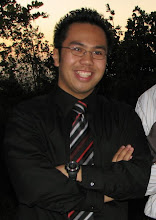8.15.2010
Mile 8246: To Tell the Truth
WHO CAN I TRUST MORE:
THE PATIENT OR THE CHART?
Infectious Diseases has been a great rotation thus far. Although I'm still at the same hospital as my previous rotation, the days feel a lot different as a consultant than as someone who's working the floors. Maybe its that the subject matter is much more specialized, or its probably also not having to deal with as many folks left and right when managing patients (on the floors for the last twelve weeks, everything from nurses to consultants and even writing notes would slow down a day's efficiency dramatically). However, I'll be honest that after 12 weeks of intensely working the floors, 4 weeks of consulting is a breath of fresh air.
Don't get me wrong, I've learned a lot about management of infectious disease simply from my first week on the post. I've at least had some slight refining with my knowledge of antibiotic spectra, common sense on when to appropriately check for blood cultures, and even evaluating if a "fever" is truly a fever. For some odd reason the "card-playing" game with empiric and more targeted antibiotics is something that intrigued me. I'm looking forward to learning more about that in the near future.
1:30 PM Friday. My attending and I are in the room of a patient along with their family. However, when my attending was further questioning a part of the patient's family history, we basically got a irate response of, "Go look in the chart!" from the family (I'm guessing that getting asked the same questions multiple times by multiple people finally go to them). My attending handled the situation calmly and well and explained to them that it is better to get the information from the patient rather than from the chart, because the chart has the higher chance for errors. Only when the patient couldn't recall the information would my attending refer to the chart. My attending further mentioned that the patient was someone that could be trusted more. With that, the patient, along with the family, had smiles of confidence and breaths of relief.
The point makes much sense though. If you've ever seen people try to spread news from one person to another, it never comes out straight after being handed down several people. The chart is like that, especially exaggerated when trying to interpret someone else's words when someone is not there to clarify or answer any of the doctor's questions. The bottom line from this lesson is that the purpose of the chart is to document what was done, but not to be used to substitute for a proper history taking or physical examination.
A simple, but very useful lesson.
8.07.2010
Mile 8052: Teaching an old dog new tricks
 Above: Jon, John, and Khoi and myself enjoying a night out at an Ethiopian restaurant after our final day.
Above: Jon, John, and Khoi and myself enjoying a night out at an Ethiopian restaurant after our final day.ON MY LAST DAY
I BROKE A SWEAT.
7:40 PM Friday. I never really had Ethiopian food before. I'm very glad that one of our colleagues Jonathan had brought up the idea. You basically go in, and all the stuff that's ordered comes out on this huge platter. If you've been to Maggiano's or some other "family style" Italian eatery, you know how family style works. But I learned that Ethiopian family style is much more adventurous... it involves eating with your hands. I never imagined that eating with my hands could be so enjoyable... and so tasty!
Who knew that at the end of a medical rotation, I'd still have the brain capacity to learn something new.
-----
It's the end of my twelve weeks here for Internal Medicine. Before I keep going, I apologize for not writing more during those twelve: it was that intensive. I admit that its tough for me to study at home even more now, because I guess I've conditioned myself to take home as a place of rest. Even with coffee, I sometimes struggle with trying to make it through the latest literature or even just high yield Step 2 studying.
Am I glad its over? In ways yes, and in other ways, no. Yes, I'm tired. Yes, I need a vacation (even though I had an awesome one a few months ago). But I loved my group (we all had a rhythm and enjoyed each other's contributions to the team), and also what I had learned in the last few weeks. One of the attendings had said to us that learning medicine was the essence of repetition, and I'll admit that seeing dozens of many cases made me get into a rhythm of what to look for while taking a history and the direction to take when managing a patient. I loved running the floors, writing notes, and working with nurses, attendings, and case managers. I really had the feeling of what residency would be like in internal medicine.
What's next for me? Well, same place, but second verse. It's time for a little adventure into the world of Infectious Disease (ID) for four weeks. Think of it as an extension of Internal Medicine. So during the next few weeks, I'll try to replay some of my experiences during IM, and also try to expand on what exactly ID brings for me.
Subscribe to:
Comments (Atom)

